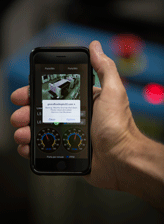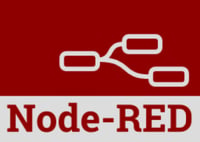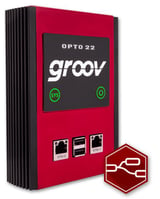 We’re all aware of the opportunities the Industrial Internet of Things (IIoT) is poised to deliver:
We’re all aware of the opportunities the Industrial Internet of Things (IIoT) is poised to deliver:
- Using big data generated by billions of things to solve problems before they occur
- Increasing operator situational awareness on the plant floor with mobility
- Identifying new business opportunities we couldn’t see before
But developing and deploying a successful IIoT application requires leveraging two completely different technology disciplines that for the most part were never designed to work with one another: OT and IT.
To increase the enterprise’s competitive advantage, Operations Technology (OT, aka automation) and Information Technology (IT) professionals must converge and create new applications that access, share, and analyze business information faster and more efficiently by leveraging new tools, like artificial intelligence, machine learning, and predictive analytics.
But building applications that connect information from OT devices and data stores to IT resources and systems has traditionally been difficult. The two groups use entirely different application development tools tailored for their specific disciplines.
Enter Node-RED, an open-source development environment invented by Nick O’Leary and Dave Conway-Jones of IBM® Emerging Technology Services. Node-RED is part of the newly launched JS Foundation, which recently became a Linux Foundation Project.
Node-RED for IIoT
 Node-RED is a tool for digitally wiring together hardware devices, APIs (application program interfaces), and online services in new and interesting ways.
Node-RED is a tool for digitally wiring together hardware devices, APIs (application program interfaces), and online services in new and interesting ways.
Node-RED provides engineers with an easy way to connect edge computing systems such as industrial automation controllers to cloud services such as Amazon Web Services™ (AWS) IoT, IBM Watson IoT™, and Microsoft® Azure®.
Node-RED is an open-source technology available on GitHub.com and npmjs.org. The development environment can run on almost any platform:
- OS X®, Microsoft Windows®, Linux®, and Raspberry Pi™
- Cloud offerings like IBM Bluemix® and AT&T® Flow
- Industrial products like hardened IIoT application development platforms with built-in industrial protocol support, like the groov Box appliance from Opto 22.
Lowering the Technical Bar
The Node-RED development environment offers a gradual and easily approachable learning curve for users of all levels and requires few or no programming skills.
Instead, Node-RED takes advantage of pre-programmed, reusable code blocks called nodes. These nodes make IIoT application development simpler, easier to repeat, and faster to scale.
Built on the popular Node.js JavaScript runtime, Node-RED benefits from a large Node-RED library—containing over 600 prebuilt and ready-to-deploy nodes—allowing IIoT application developers to leverage existing software code and deploy it directly into their applications.
The development environment is any standard web browser, and it uses a drag-and-drop interface. The simplicity of Node-RED allows IIoT application developers to focus on identifying an opportunity and developing a solution, rather than building the components of an application from scratch.
For example, want to create an application to poll data from a Modbus/TCP slave, log that data to an SQL database, and move it into a machine-learning application program like IBM’s Watson? There are nodes for all of those functions, already developed and ready to deploy without having to write, debug, or support software code.
Drag, drop, wire together, deploy. It’s that easy.
Advanced JavaScript functions can also be created within the editor using a Function node. A built-in library lets you save useful functions, templates, or node flows for re-use.
The flows created in Node-RED are stored using the widely known JSON format, which can be easily imported and exported for sharing with other developers and applications, promoting the idea of social application development.
Rapid IIoT Application Prototyping
Linking technology assets and services together to build IIoT applications often requires layers of complex software development and long development cycles that quickly erode IIoT application ROI.
In contrast, Node-RED’s existing pool of code blocks enables nearly anyone to rapidly prototype and develop IIoT applications to connect data streams from industrial assets to IT assets, bridging the gap between the worlds of physical equipment and digital computing systems.
Developers can even prototype applications on low-cost maker boards such as Raspberry Pi and then seamlessly deploy them to an an industrial-grade suite of products capable of functioning in mission-critical and harsh industrial environments.
OT/IT Software Convergence
 The OT and IT domains began to converge many years ago with the rollout of Ethernet and TCP/IP on the plant floor. Suddenly systems became much easier to connect together.
The OT and IT domains began to converge many years ago with the rollout of Ethernet and TCP/IP on the plant floor. Suddenly systems became much easier to connect together.
Productivity in the factory and on the plant floor improved, and support costs were lowered, all because our devices began speaking the same protocols across the same type of media—TCP/IP and Ethernet.
OT/IT convergence is continuing up the technology ladder. And the next rung on the ladder is software. Node-RED is poised to be a major contender for standardized IIoT software application development.
Node-RED is now included in the groov Box appliance. groov is the easy-to-use tool for building and using mobile operator interfaces, and the plug-and-play groov Box with Node-RED gets you started on your IIoT project quickly.

